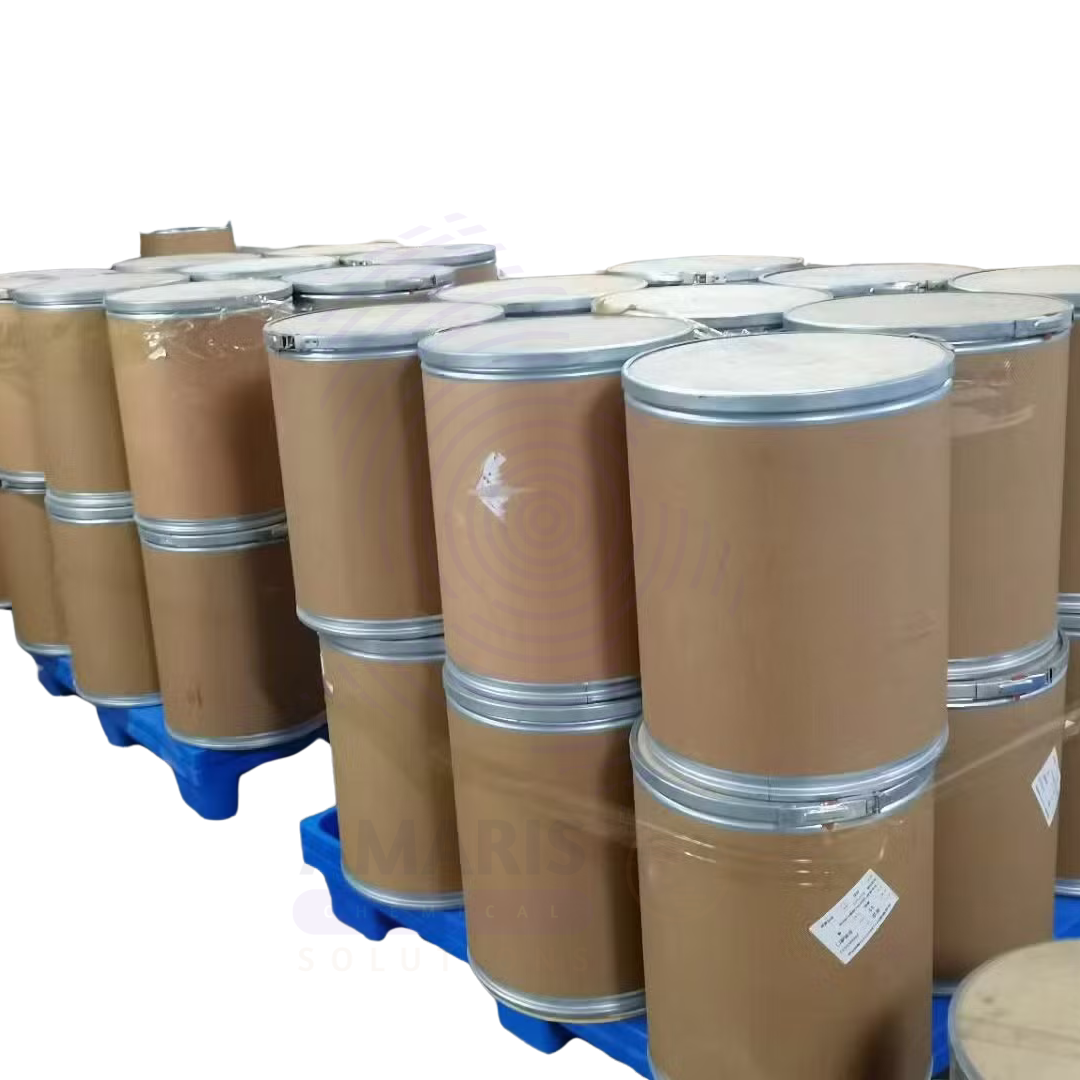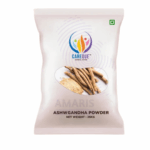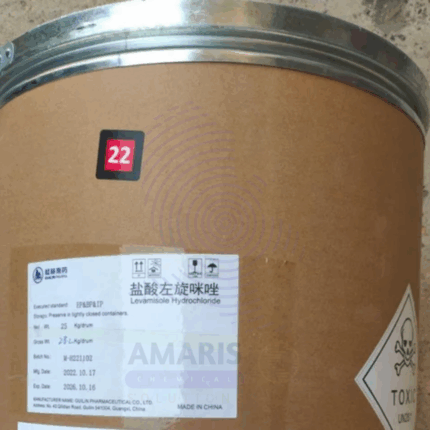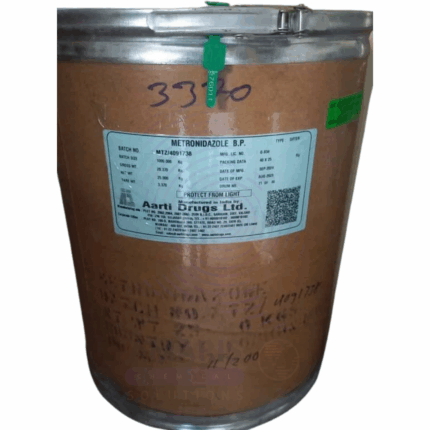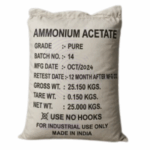
Amethocaine
Amethocaine , also known as Tetracaine Hydrochloride, is a potent local anesthetic commonly used in medical and dental procedures to induce numbness or loss of sensation in targeted areas. It belongs to the ester class of local anesthetics and acts by blocking nerve signal transmission, preventing pain sensation. Amethocaine HCl BP is a crystalline white powder, highly soluble in water, and used in topical formulations such as creams, gels, sprays, and injections. Due to its rapid onset and intermediate duration of action, it is widely utilized for surface anesthesia before minor surgeries, endoscopic procedures, or dental treatments. It is approved by pharmacopeias including the British Pharmacopoeia (BP), ensuring compliance with quality and purity standards essential for pharmaceutical applications.
Amethocaine
Primary Uses
- Medical & Dental Local Anesthesia
- Used as a topical anesthetic for minor surgical procedures, including skin biopsies, suturing, and superficial excisions.
- Employed in dentistry for numbing mucous membranes during tooth extractions, root canals, and other oral surgeries.
- Applied before endoscopic procedures (e.g., bronchoscopy, cystoscopy) to minimize discomfort in mucosal linings.
- Used to anesthetize the cornea in ophthalmologic examinations or surgeries.
- Ophthalmology & ENT Procedures
- Provides surface anesthesia for diagnostic and therapeutic procedures involving eyes, ears, nose, and throat.
- Facilitates painless removal of foreign bodies and minor surgical interventions on mucosal surfaces.
Secondary Uses
- Research & Laboratory Use
- Utilized in pharmacological studies related to nerve signal transmission and anesthetic mechanisms.
- Occasionally included in formulations for topical pain relief in veterinary medicine.
- Pharmaceutical Formulations
- Incorporated in compounded topical anesthetic creams and gels, often blended with other agents (e.g., lidocaine) to enhance efficacy.
- Used in sprays and lozenges for temporary numbing of throat and oral mucosa.
1. Basic Identification Attributes
- Chemical Name (IUPAC): 2-(Dimethylamino)ethyl 4-(butylamino)benzoate hydrochloride
- Common/Trade Names: Amethocaine HCl, Tetracaine Hydrochloride
- CAS Number: 136-47-0
- HS Code: 2924.99.90
- Molecular Formula: C15H24N2O2·HCl
- Synonyms: Tetracaine hydrochloride, Amethocaine hydrochloride BP
2. Physical & Chemical Properties
- Physical State: White crystalline powder
- Color & Odor: White, odorless or faint aromatic odor
- Melting Point: 146–149°C (decomposes)
- Boiling Point: N/A (decomposes)
- Density: ~1.1 g/cm³
- Solubility: Freely soluble in water, alcohol, and chloroform
- pH Level: Slightly acidic in aqueous solutions (~4–6)
- Vapor Pressure: Negligible
- Flash Point: Not applicable (non-flammable solid)
- Autoignition Temperature: N/A
3. Safety & Hazard Attributes
- Hazard Class (GHS): Harmful if swallowed; causes serious eye irritation
- NFPA Ratings: Health 2, Flammability 1, Reactivity 0
- Exposure Limits: No specific OSHA PEL; handle as pharmaceutical-grade chemical
- Reactivity: Stable under normal conditions
- Incompatibilities: Strong oxidizing agents, acids, and bases
4. Storage & Handling Attributes
- Storage Conditions: Store in a cool, dry place below 25°C, protected from light and moisture
- Container Type: Sealed amber glass or plastic containers
- Shelf Life: Typically 2-3 years if stored properly
- Special Handling: Avoid inhalation and contact with skin or eyes; use gloves and protective eyewear
5. Regulatory & Compliance Attributes
- Regulatory Status: Listed in British Pharmacopoeia (BP) with strict purity standards
- Transportation: Not classified as hazardous for transport when packaged properly
- Waste Disposal: Dispose of in accordance with pharmaceutical waste guidelines
6. Environmental & Health Impact
- Ecotoxicity: Limited data; handle as pharmaceutical waste to avoid environmental release
- Persistence: Organic compound; biodegradable under environmental conditions
- Carcinogenicity: No evidence of carcinogenicity
- Biodegradability: Readily biodegradable in natural environments
Safety Handling Precautions
- PPE: Use gloves, safety goggles, and lab coats when handling powder or concentrated solutions.
- Handling: Avoid dust formation and inhalation; work in a well-ventilated area or fume hood.
- Storage: Keep tightly closed in original containers away from moisture and heat sources.
- Hygiene: Wash hands thoroughly after handling; avoid eating, drinking, or smoking.
First Aid Measures
- Inhalation: Move affected person to fresh air. If breathing difficulty occurs, seek medical attention.
- Skin Contact: Wash thoroughly with soap and water. If irritation develops, consult a physician.
- Eye Contact: Rinse eyes immediately with plenty of water for at least 15 minutes; seek medical help if irritation persists.
- Ingestion: Rinse mouth; do not induce vomiting unless directed by medical personnel; seek immediate medical assistance.
Firefighting Measures
- Fire Hazards: Not flammable but may decompose at high temperatures releasing toxic fumes such as nitrogen oxides and carbon monoxide.
- Extinguishing Media: Use water spray, foam, dry chemical, or CO₂ extinguishers.
- Precautions: Firefighters should wear self-contained breathing apparatus due to toxic decomposition products.


 Preservatives(food)
Preservatives(food) Flavor Enhancers
Flavor Enhancers Acidulants
Acidulants Sweeteners
Sweeteners Antioxidants
Antioxidants Colorants(food)
Colorants(food) Nutraceutical Ingredients (food)
Nutraceutical Ingredients (food) Nutrient Supplements
Nutrient Supplements Emulsifiers
Emulsifiers
 Collectors
Collectors Dust Suppressants
Dust Suppressants Explosives and Blasting Agents
Explosives and Blasting Agents Flocculants and Coagulants
Flocculants and Coagulants Frothers
Frothers Leaching Agents
Leaching Agents pH Modifiers
pH Modifiers Precious Metal Extraction Agents
Precious Metal Extraction Agents
 Antioxidants(plastic)
Antioxidants(plastic) Colorants (Pigments, Dyes)
Colorants (Pigments, Dyes) Fillers and Reinforcements
Fillers and Reinforcements Flame Retardants
Flame Retardants Monomers
Monomers Plasticizers
Plasticizers Polymerization Initiators
Polymerization Initiators Stabilizers (UV, Heat)
Stabilizers (UV, Heat)
 Antifoaming Agents
Antifoaming Agents Chelating Agents
Chelating Agents Coagulants and Flocculants
Coagulants and Flocculants Corrosion Inhibitors
Corrosion Inhibitors Disinfectants and Biocides
Disinfectants and Biocides Oxidizing Agents
Oxidizing Agents pH Adjusters
pH Adjusters Scale Inhibitors( water)
Scale Inhibitors( water)
 Antioxidants(cosmetic)
Antioxidants(cosmetic) Emollients
Emollients Fragrances and Essential Oils
Fragrances and Essential Oils Humectants
Humectants Preservatives
Preservatives Surfactants(cosmetic)
Surfactants(cosmetic) Thickeners
Thickeners UV Filters
UV Filters
 Fertilizers
Fertilizers Soil Conditioners
Soil Conditioners Plant Growth Regulators
Plant Growth Regulators Animal Feed Additives
Animal Feed Additives Biostimulants
Biostimulants Pesticides (Herbicides, Insecticides, Fungicides)
Pesticides (Herbicides, Insecticides, Fungicides)
 Active Pharmaceutical Ingredients (APIs)
Active Pharmaceutical Ingredients (APIs) Excipients
Excipients Solvents(pharmaceutical)
Solvents(pharmaceutical) Antibiotics
Antibiotics Antiseptics and Disinfectants
Antiseptics and Disinfectants Vaccine Adjuvants
Vaccine Adjuvants Nutraceutical Ingredients (pharmaceutical)
Nutraceutical Ingredients (pharmaceutical) Analgesics & Antipyretics
Analgesics & Antipyretics
 Analytical Reagents
Analytical Reagents Solvents(lab)
Solvents(lab) Chromatography Chemicals
Chromatography Chemicals Spectroscopy Reagents
Spectroscopy Reagents microbiology-and-cell-culture-reagents
microbiology-and-cell-culture-reagents Molecular Biology Reagents
Molecular Biology Reagents Biochemical Reagents
Biochemical Reagents Inorganic and Organic Standards
Inorganic and Organic Standards Laboratory Safety Chemicals
Laboratory Safety Chemicals Specialty Laboratory Chemicals(Special Laboratory Equipment)
Specialty Laboratory Chemicals(Special Laboratory Equipment)
 Demulsifiers
Demulsifiers Hydraulic Fracturing Fluids
Hydraulic Fracturing Fluids Scale Inhibitors(oil)
Scale Inhibitors(oil) Surfactants(oil)
Surfactants(oil) Drilling Fluids
Drilling Fluids
 Dyes and Pigments
Dyes and Pigments Bleaching Agents
Bleaching Agents Softening Agents
Softening Agents Finishing Agents
Finishing Agents Antistatic Agents
Antistatic Agents
 Admixtures
Admixtures Waterproofing Agents
Waterproofing Agents Sealants and Adhesives
Sealants and Adhesives Curing Compounds
Curing Compounds Concrete Repair Chemicals
Concrete Repair Chemicals Anti-Corrosion Coatings
Anti-Corrosion Coatings
 Surfactants(cleaning)
Surfactants(cleaning) Builders
Builders Enzymes
Enzymes Solvents (Cleaning)
Solvents (Cleaning) Fragrances
Fragrances
 Electronic Chemicals
Electronic Chemicals Catalysts
Catalysts Lubricants
Lubricants Photographic Chemicals
Photographic Chemicals Refrigerants
Refrigerants Automotive chemicals
Automotive chemicals Pyrotechnic Chemicals
Pyrotechnic Chemicals
 Biodegradable Surfactants
Biodegradable Surfactants Bio-based Solvents
Bio-based Solvents Renewable Polymers
Renewable Polymers Carbon Capture Chemicals
Carbon Capture Chemicals Wastewater Treatment Chemicals
Wastewater Treatment Chemicals
 Pigments
Pigments Solvents(paint)
Solvents(paint) Specialty Coatings
Specialty Coatings Binders/Resins
Binders/Resins Additives
Additives Driers
Driers Anti-Corrosion Agents
Anti-Corrosion Agents Functional Coatings
Functional Coatings Application-Specific Coatings
Application-Specific Coatings
 Fresh Herbs
Fresh Herbs Ground Spices
Ground Spices Whole Spices
Whole Spices Spice Blends
Spice Blends Dried Herbs
Dried Herbs
 Leavening Agents
Leavening Agents Dough Conditioners
Dough Conditioners Flour Treatments
Flour Treatments Fat Replacers
Fat Replacers Decoratives
Decoratives Preservatives(baking)
Preservatives(baking)
 Plasticizers & Softeners
Plasticizers & Softeners Reinforcing Agents
Reinforcing Agents Adhesion Promoters
Adhesion Promoters Vulcanizing Agents
Vulcanizing Agents Antidegradants
Antidegradants Blowing Agents
Blowing Agents Fillers & Extenders
Fillers & Extenders Accelerators & Retarders
Accelerators & Retarders